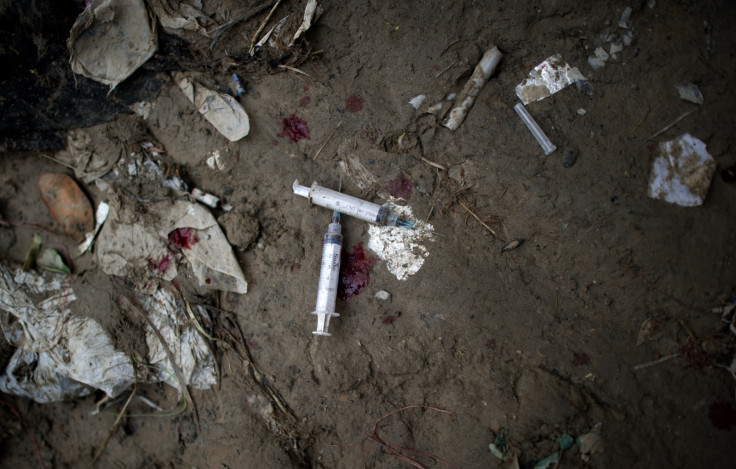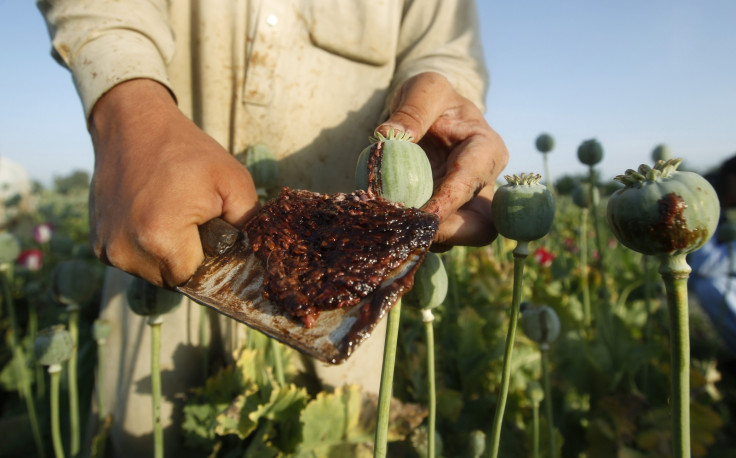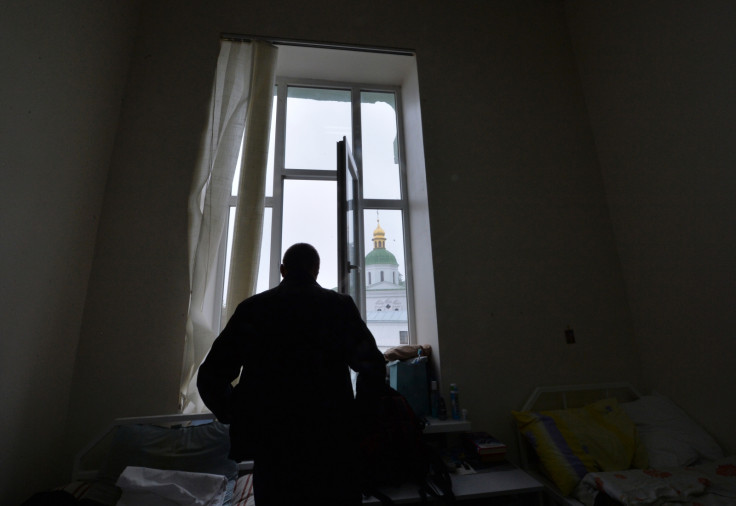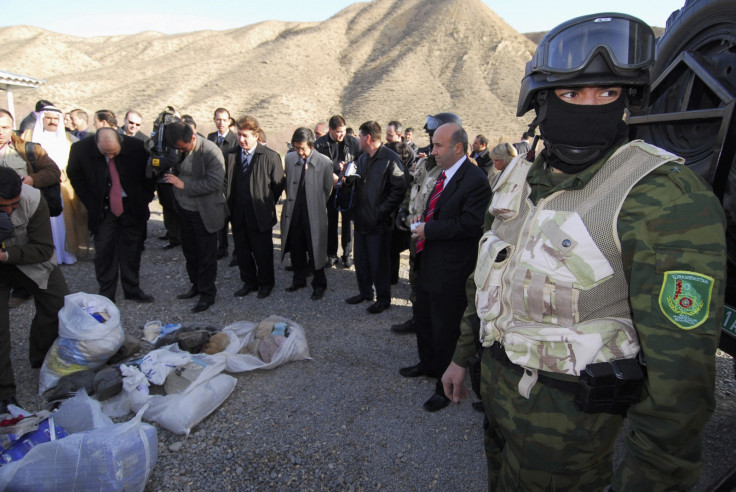World Aids Day 2014: HIV on the Heroin Highway

Evgeny Spevak, 38, is from Svietlahorsk in south-eastern Belarus. He was diagnosed with HIV in 1996, from injecting opiates.
Spevak's hometown is the worst region affected by HIV and Aids in the country, which lies along the heroin trafficking route from Afghanistan to Eastern Europe. Although the industrial town accounts for less than 1% of the population of Belarus, it accounts for nearly a third of all reported cases of infection in the country.
"You can learn to live with HIV. Sometimes it is hard, and sometimes it is easier," Spevak says. He began to use drugs after graduating from college.
"Drugs were available in the city at the time, people thought they were only used by the elite," he explains. "In 1996, people began to be diagnosed with HIV."
"When I found out I was positive, I was heavily dependent on drugs. I thought people die from HIV, and I will die a natural death. I even felt some relief from that."
After the shock of his diagnosis began to fade, Spevak stopped using drugs and began antiretroviral treatment. He is now married with children – a daughter, who was born healthy in 1999. He is a member of the board of the Belarussian community of people living with HIV.
With World Aids Day approaching, Spevak wants to promote prevention methods and treatment for human immunodeficiency virus.
"Life with HIV is far from easy," he adds. "You can live, but you will always live with the treatment."
"By talking about HIV, I hope for a better life for others who are infected. Let it be so that there will be no one at all who will die from lack of treatment, from late diagnosis or from late treatment."

Rising rates
While new HIV infections have declined globally, rates have soared in Russia, Central Asia and Eastern Europe by 250% since 2001. Over 1.4 million people are living with HIV in the region, and drug use by injection is responsible for the transmission of 40% of all new infections.
Climbing rates have coincided with the rise of drug users injecting opiates, which developed in the mid-1990s during the socioeconomic crisis that followed the break-up of the Soviet Union.
At the time, nearby Afghanistan became the world's largest producer of opium - from which heroin is derived - and drug trafficking rocketed. The heroin highway, from Afghanistan through Central Asia to Eastern Europe, was born.
"The HIV epidemic in Central Asia and Eastern Europe is one of the only regions in the world where the epidemic is still expanding," says Caitlin Mahon, of the international HIV/AIDS charity Avert.
"Between 2005 and 2013, new HIV infections rose by 5%, and so did AIDS-related deaths," Mahon adds. "Globally, around a quarter of all people who inject drugs live Russia, Central Asia and Eastern Europe – which is 37 million people."
To put this into perspective, new HIV infections in sub-Saharan Africa have declined by third during the same period.
Over two decades after the dissolution of the USSR, the region is home to one of the fastest-growing HIV epidemics in the world - abetted by substandard healthcare, state corruption and stigma.

Limited prevention
In former Soviet states, the HIV epidemic continues to grow because of a lack of essential healthcare for drug users at the heart of the problem.
"This is largely an epidemic driven by the deeply flawed public health response to injecting heroin, most notably the lack of opioid substitution therapy and a lack of clean needles and syringes," Professor Chris Beyrer, president of the International AIDS Society and associate director of the John Hopkins Centre for Aids Research, tells IBTimes UK.
"But the very high proportion of young people using opiates in the region is an outcome of the enormous production of opium and heroin from Afghanistan."
Opioid replacement therapy is successfully used in countries worldwide to wean drugs users off illegal opioids and onto longer-acting equivalents, such as methadone or buprenorphine. Since 1997, however, the therapy has been banned in Russia under the state's federal law on narcotics and psychotropic substances.
"Russia has long banned methadone and any other substitution therapy," Beyrer explains. "Also, the Russians have aggressively pressed their neighbours not to use this proven and effective treatment as well."
While the therapy is available in Kazakhstan and Tajikistan, it is not in Turkmenistan and Uzbekistan – a country with 35,000 people living with HIV and Aids, according to the United Nations Programme on HIV and Aids. The number of people with HIV in Turkmenistan is unknown, although the government maintains that there have only ever been two cases in the country.

Only three regions have access to the programme in Kazakhstan, with just 118 people receiving the therapy as of 2012.
The story is similar in Eastern Europe, where opioid replacement therapy is largely restricted due to objections by drug enforcement agencies. Only 17% of drug users in Belarus and a quarter in Moldova had access to harm reduction services in 2013.
After Russia annexed Crimea in mid-March in the wake of Ukraine's political upheavals, Russian officials ceased prescriptions for 800 methadone recipients. One user from Sevastopol told local media that the sudden cessation would lead to a "massacre". Three months later, around 20 people were reported to have died.
Comparatively, Ukraine has seen a decrease in HIV rates annually among those who inject drugs since methadone was legalised in 2007. However, drug users seeking the therapy face another deterrent. They are placed on an official register that is often used to exclude them from certain professions; their information passed between medical and law enforcement institutions.
To date, only 7% of Russians injecting drugs have access to clean needle programmes. In Central Asia and Eastern Europe, such schemes are available but supplies are inadequate. Since 2008, there have only two needle exchanges in Turkmenistan.
"People who use drugs need to be at the heart of the response," Mahon adds. "A commitment to scaling-up prevention and treatment initiatives for people who use drugs is essential, otherwise little progress will be made in the region."
Cover-ups, corruption and stigma

Marginalised in society, those living with HIV in Russia, Central Asia and Eastern Europe are often swept under the carpet. The political legacy of authoritarianism and control has led to a failure in protecting some the most vulnerable in society, in part, because of the stigma surrounding the disease.
Olga Vladimirova is 27 years old and HIV positive. She lives in St Petersburg and contracted the virus from her former husband. She tells IBTimes UK that stigma is still a major problem in the country.
"In Russia, there are problems with educating people about the disease. There are many myths," she says. "Coming out with HIV can destroy your life. People hate HIV and fear it."
Stigma prevents those at risk or in need of treatment from coming forward, regardless of how infection was transmitted. In Russia, the HIV epidemic among gay men is seemingly small – with just 1,718 cases, but this is likely a result of under-reporting.
In 2013, Russia's national parliament, the State Duma, passed a federal law banning gay "propaganda" amid a Kremlin push to enshrine deeply conservative values. As a result, information on homosexual rights and health have been quashed.
In addition, the denial of uncomfortable realities has led to cover-ups and deadly mistakes that lie at the root of the HIV epidemic.
In April 2010, it emerged that 150 Uzbek children had accidentally been infected at a hospital in the north-eastern Uzbekistan city of Namangan in 2007 and 2008. The incident was covered up for over two years and by January 2009, 14 of the infected children had died.
The children were infected by the reuse of unsterilised equipment, which only became public knowledge when the opposition Ferhana.ru website leaked a documentary shot by Uzbek TV. Twelve doctors and nurses were eventually tried in court, found guilty of mistreatment of the children and sentenced to between five and nine years in prison.

In neighbouring Turkmenistan, officials claim there have only ever been two cases of HIV in the country. Contrary to their figures, however, significantly larger numbers have been reported in single towns.
According to a report by the Turkmen Initiative for Human Rights, a Vienna-based NGO, 68 HIV-positive individuals were allegedly identified in Turkmenbashi, a town in the Balkan Province of the country. The safety of Turkmenistan's blood supplies has also come under question, with reports of inconsistent screening of donor blood products for HIV – in particular, blood donated from relatives.
In the Shymkent region of Kazakhstan in 2006, HIV outbreaks through hospital blood transfusions caused more than 100 children to become infected. While 17 health workers were jailed, four senior officials were spared incarceration.
Since then, however, efforts to curb the spread of infection have improved in Kazakhstan. In 2009, nearly 60% of drug users who are injecting were reached by prevention programmes.
Yet across Eastern Europe, HIV prevention methods have been halted with various state pressures, illogical legislation and decrees. Stigma against drug users and HIV is rife.
Future of HIV
From Afghanistan to Eastern Europe, efforts are being doubled to repress the HIV epidemic. But prevention methods and life-saving treatment, such as antiretroviral drugs, rely on extensive funding.
In 2011, the Global Fund to Fight Aids, Tuberculosis and Malaria, launched by the former UN secretary general Kofi Annan a decade ago, cancelled its next funding round – due to a lack of money. The year before, when the fund asked for $20 billion, donors coughed up just $11.7 billion.
After the funding ceased in Romania – when the country joined the European Union – there was a 20-fold increase in HIV incidence among drug users.
"The crucial point is that increased drug injection provides only a partial explanation for the dramatic increases in HIV infection during the transition years," says Martin Donoghue, the programme manager for HIV and Aids at the World Health Organisation.
"These increases need to be understood in the context of economic decline, failing health and failing health care systems."
The HIV crisis, as Beyrer adds, is far from over.
"With very high rates of heroin use as an outcome of the Afghan crop, which is larger now than ever before, it makes for a truly challenging situation."
© Copyright IBTimes 2025. All rights reserved.




















